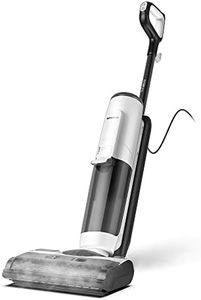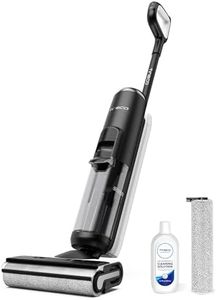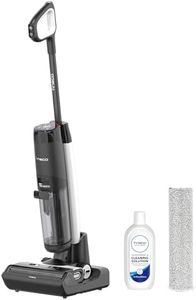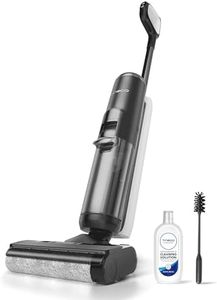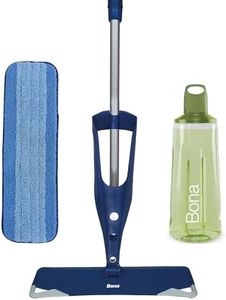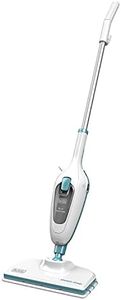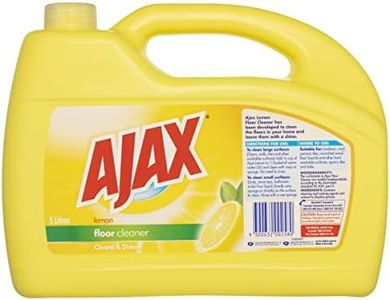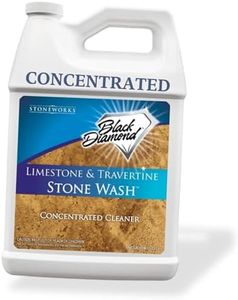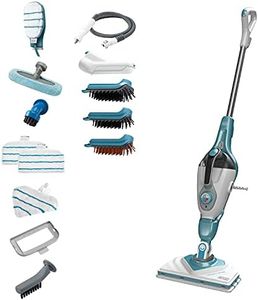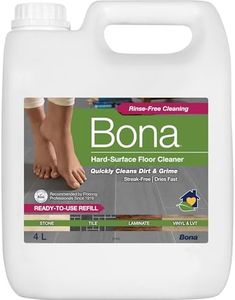We Use CookiesWe use cookies to enhance the security, performance,
functionality and for analytical and promotional activities. By continuing to browse this site you
are agreeing to our privacy policy
10 Best Tile Floor Cleaners
From leading brands and best sellers available on the web.Buying Guide for the Best Tile Floor Cleaners
Choosing the right tile floor cleaner can make your cleaning routine much more efficient and help extend the life and beauty of your floors. There are many different types of tile floor cleaners, including manual mops, spray mops, steam mops, and electric scrubbers. To make a good decision, focus on how much effort you want to put in, the size and type of your tiled area, and how often you plan to clean. It's important to match the cleaner to your specific tile type (ceramic, porcelain, natural stone, etc.) and be mindful if you have grout that needs special care.Type of CleanerThe type of cleaner determines both the cleaning method and how much effort is involved. Manual options like mops and mop-and-bucket systems are straightforward and inexpensive but require the most physical effort. Spray mops are convenient for quick cleaning and are good for small spills or regular upkeep. Steam mops use hot steam to loosen dirt and sanitize surfaces, making them a good fit for those who want deep cleaning without chemicals. Electric scrubbers have rotating brushes for more thorough cleaning, and they’re helpful if you have large or especially dirty areas. Choose the type based on your cleaning preferences, physical abilities, and the amount of floor space you need to clean.
Compatibility with Floor TypeNot all cleaners are safe for every tile. Some tiles, like natural stone or delicate finishes, can be damaged by harsh detergents or acidic cleaners, while ceramic and porcelain are more forgiving. Steam mops may not be suitable for certain natural stones. Always check your tile manufacturer’s care guidelines and look for cleaners or cleaning tools that are labeled as safe for your specific tile to avoid damage and keep your floors looking their best.
Cleaning Solution RequirementSome floor cleaners use only water, while others require or allow specific cleaning solutions. Water-only systems, like steam mops, appeal to those who want chemical-free cleaning or have sensitivities. Systems that require cleaners may do a better job on greasy or heavily soiled floors. If you prefer to control what chemicals are used in your home, look for a product that lets you choose your own cleaning solution. Picking the right one depends on your sensitivity to chemicals, the kind of dirt you usually face, and any preferences for eco-friendly products.
Tank or Reservoir SizeFor cleaners that use water or cleaning solution, the size of the tank matters. Smaller tanks make the device lighter and easier to maneuver but need frequent refilling, which can be inconvenient for larger spaces. Larger tanks allow for longer cleaning sessions but make the cleaner heavier and potentially harder to handle, especially in smaller rooms. Think about the size of the area you typically clean and your willingness to refill the tank during use to decide what’s best for your situation.
Weight and ManeuverabilityWeight affects how easy it is to carry and use the floor cleaner, especially if you have multiple levels in your home or limited strength. Lightweight options are easier to maneuver and better for frequent use or older adults. Heavier, more powerful machines do a better job on tough dirt but may be cumbersome. Balance your need for deep cleaning with how comfortable you are lifting and pushing the machine across your floors.
Corded vs Cordless OperationTile floor cleaners can be corded, plugging into wall outlets for unlimited cleaning time, or cordless, running on rechargeable batteries for greater freedom of movement. Corded models are suitable for larger areas since they don’t run out of power but require you to manage the power cord. Cordless models are easier to use in tight or awkward spaces and for quick clean-ups, but their battery life limits the cleaning session. Consider the layout and size of your cleaning space when choosing between these options.
Special FeaturesFeatures such as adjustable steam or spray settings, built-in scrub brushes for grout, attachments for corners, or easy-to-wash pads can make cleaning easier and more effective. Some units offer digital controls or self-cleaning options. Decide which features would make your cleaning jobs faster or more thorough, but avoid paying extra for features you won’t use.
